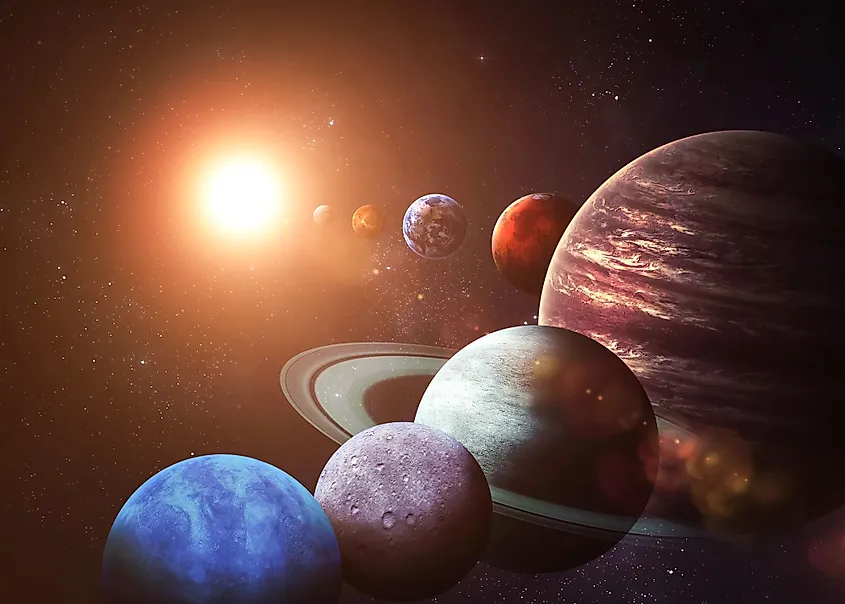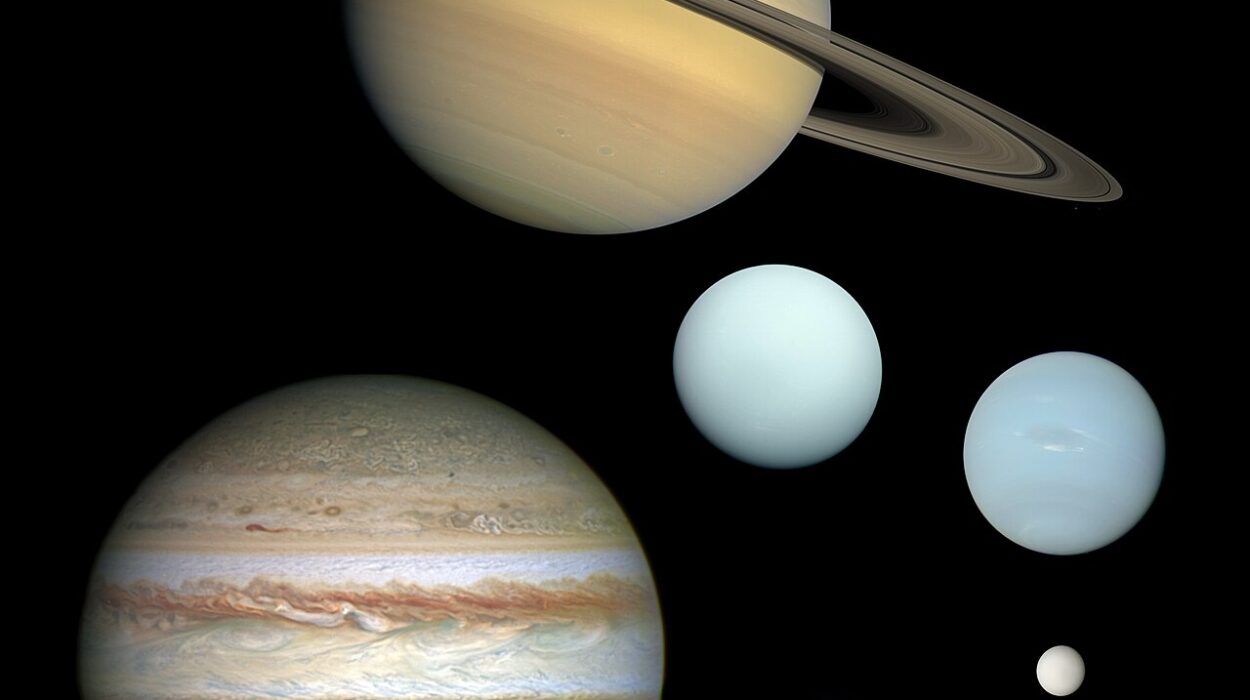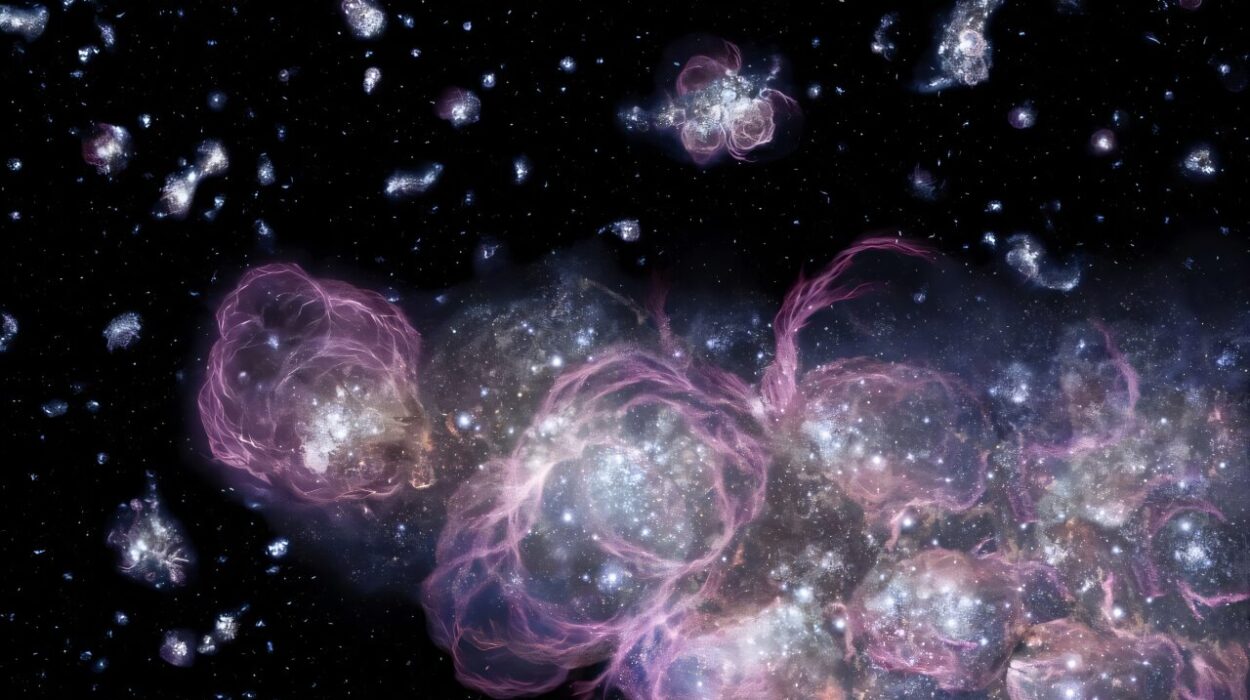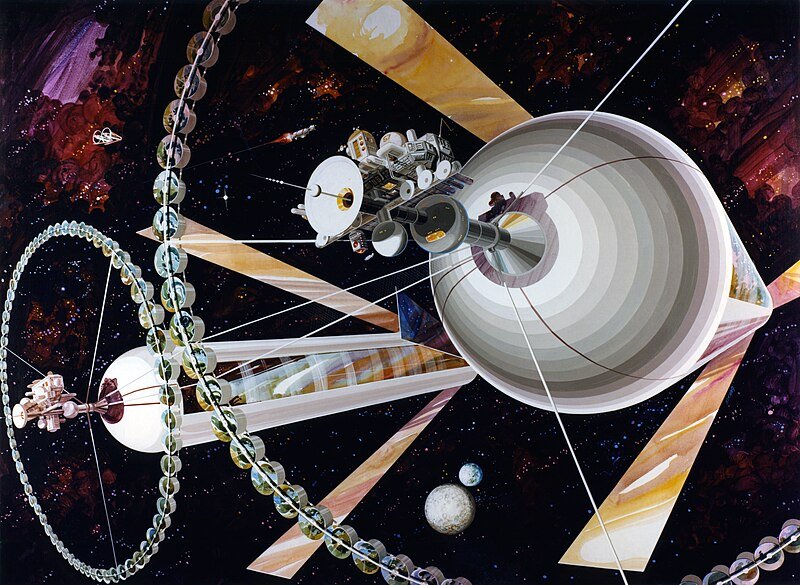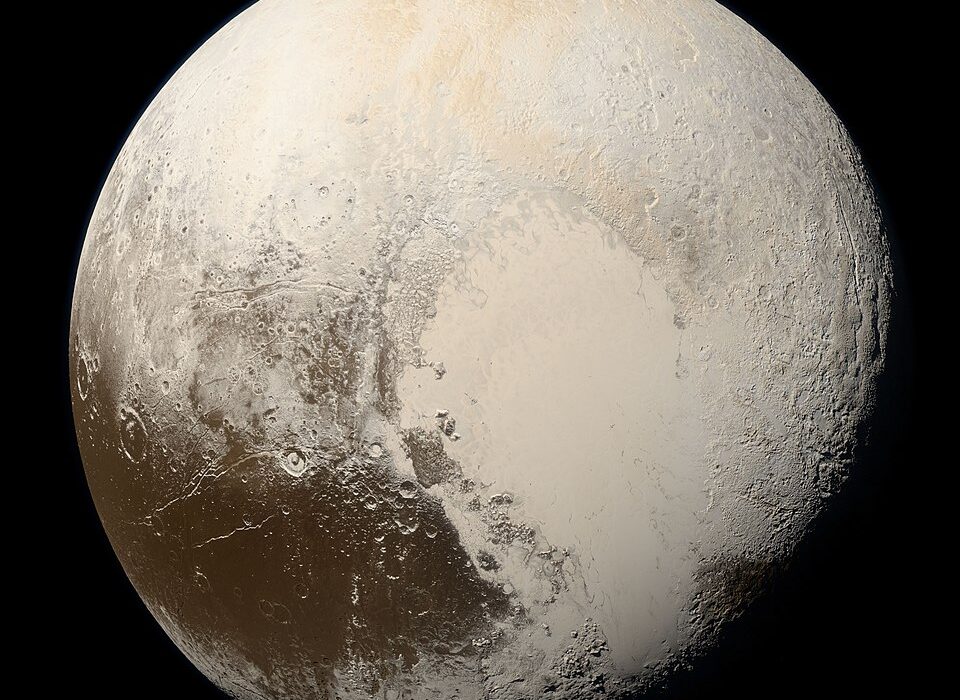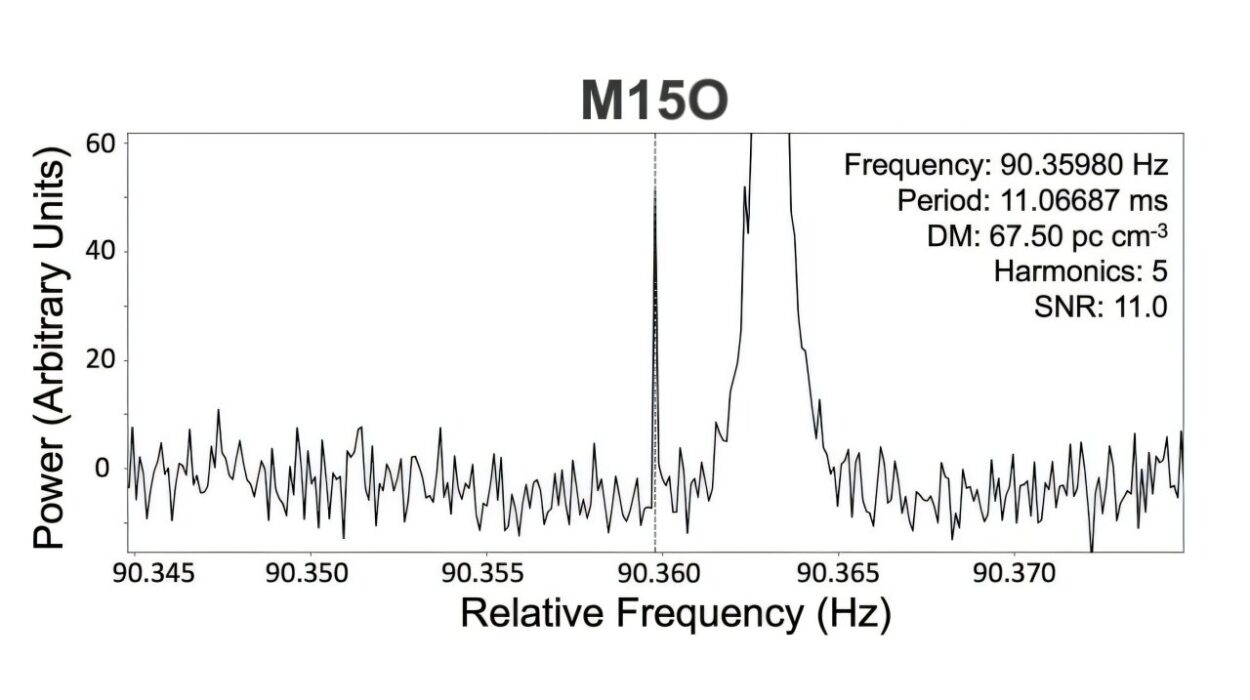When we gaze up at the night sky, it’s easy to feel alone. Our planet spins in the cold darkness of space, seemingly isolated. But Earth is not solitary—it belongs to a vast cosmic community we call the Solar System. This is a neighborhood rich with wonders: fiery and frigid planets, mysterious moons that could harbor life, belts of tumbling asteroids, and icy worlds dancing in the Sun’s distant shadow.
To understand our place in the universe, we must journey beyond Earth. We must traverse the invisible paths that planets carve around the Sun, drift past swirling clouds of gas and dust, and land on alien terrains where no human has ever walked. From the smallest asteroid to the mightiest gas giant, each neighbor tells part of the story of how our Solar System came to be, how it evolved, and what it reveals about the cosmos.
The Sun: The Heart of the Solar System
At the center of our celestial neighborhood burns the Sun, a glowing ball of plasma 109 times wider than Earth and so massive that it accounts for 99.8% of all the Solar System’s mass. It is not just a star; it is the reason every planet, moon, and asteroid exists. The Sun’s gravity keeps this family bound together, while its energy fuels life on Earth and sculpts the atmospheres of distant worlds.
Born about 4.6 billion years ago from a collapsing cloud of gas and dust, the Sun ignited when nuclear fusion began in its core. Every second, it fuses 600 million tons of hydrogen into helium, releasing energy that radiates outward, giving warmth and light to its planetary companions. Without it, the Solar System would be a frozen, lifeless void.
As we journey outward from this fiery heart, we encounter worlds vastly different from our own, yet all connected by the same cosmic dance around the Sun.
Mercury: The Scorched Wanderer
Closest to the Sun is Mercury, a small, rocky world only slightly larger than Earth’s Moon. Because it hugs the Sun so tightly, completing an orbit every 88 Earth days, its surface is baked to scorching temperatures. At noon, the ground can reach 430°C (800°F), yet nights plunge to -180°C (-290°F). With almost no atmosphere to trap heat, Mercury is a planet of extremes.
Mercury’s surface is heavily cratered, scarred by billions of years of asteroid impacts. Towering cliffs, some stretching for hundreds of kilometers, tell a story of a world that shrank as its metallic core cooled. Despite its hostile environment, Mercury is a time capsule of the early Solar System, its ancient surface relatively unchanged for billions of years. Studying Mercury helps us understand how rocky planets, including Earth, were forged from cosmic dust and fire.
Venus: The Veiled Inferno
Second from the Sun, Venus is similar in size to Earth but could not be more different in character. Thick clouds of sulfuric acid shroud its surface, trapping heat in a runaway greenhouse effect. Temperatures soar to 475°C (900°F), hot enough to melt lead, making Venus the hottest planet in our Solar System.
Beneath its choking atmosphere, Venus’s surface is a volcanic landscape of vast plains, towering mountains, and immense lava flows. Winds howl at hurricane speeds, and lightning flashes through its yellowish skies. Though often called Earth’s twin, Venus is a haunting warning of how climate can transform a world.
For centuries, scientists wondered if Venus might be habitable. But spacecraft revealed its true nature—a hellish environment where human survival is impossible. Yet this planet is more than a cautionary tale; it offers crucial clues to understanding atmospheric physics and climate evolution, knowledge essential for studying both Earth and exoplanets.
Earth: The Oasis of Life
Third from the Sun lies Earth, our home and the only planet known to harbor life. With its blue oceans, green continents, and white clouds, Earth is a jewel of balance. Its moderate distance from the Sun places it in the habitable zone, where liquid water can exist. A protective atmosphere shields life from harmful radiation while maintaining a stable climate.
Earth’s dynamic geology—plate tectonics, volcanism, erosion—has shaped its surface over billions of years. Life itself has transformed the planet, oxygenating its atmosphere and creating the biosphere we depend on. The Moon, our closest neighbor, stabilizes Earth’s tilt, moderating seasons and influencing tides that nurture life along coastlines.
From space, Earth appears as a delicate, fragile sphere—a reminder that our cosmic neighborhood is vast and indifferent, yet this single world has fostered incredible diversity and complexity.
Mars: The Red Frontier
Beyond Earth lies Mars, the Red Planet. Smaller than Earth and wrapped in a thin, cold atmosphere, Mars has captivated human imagination for centuries. Its rusty color, caused by iron oxide dust, glows warmly in the night sky. Despite its barren appearance, Mars bears tantalizing hints of a wetter past.
Ancient river valleys, dried lakebeds, and minerals that form in water suggest that billions of years ago, Mars had flowing rivers and perhaps even oceans. If it once held water, could it have supported life? Robotic explorers like NASA’s rovers have searched tirelessly, discovering organic molecules and seasonal methane bursts that hint at biological or geological activity.
Mars remains harsh today, with temperatures averaging -60°C (-80°F) and dust storms that can engulf the entire planet. Yet it is the most Earth-like of our neighbors, a world humans may one day walk upon, transforming it from a distant frontier into a second home.
The Asteroid Belt: Cosmic Rubble and Hidden Worlds
Between Mars and Jupiter lies a vast region filled with rocky remnants of the Solar System’s formation—the asteroid belt. These objects, ranging from tiny pebbles to dwarf planets like Ceres, never coalesced into a planet due to Jupiter’s immense gravity. Instead, they remain as time capsules of primordial matter.
Asteroids come in varied shapes and compositions. Some are metallic, rich in iron and nickel; others are carbonaceous, holding water and organic molecules. Impacts with asteroids have shaped the history of Earth, sometimes bringing the building blocks of life, other times causing mass extinctions.
Space agencies are now exploring these relics up close. Missions like OSIRIS-REx and Hayabusa have sampled asteroid surfaces, revealing that these small worlds may have played a crucial role in delivering water and organics to early Earth.
Jupiter: The Giant Guardian
The first of the gas giants, Jupiter is a colossal planet 11 times wider than Earth and over 300 times as massive. Its swirling, multicolored clouds and iconic Great Red Spot—a storm larger than Earth—make it a planet of grandeur and turbulence.
Jupiter’s immense gravity has shaped the Solar System. It acted as a cosmic shield, deflecting many comets and asteroids that might otherwise have struck the inner planets. Without Jupiter, Earth might have endured more catastrophic impacts, potentially hindering life’s development.
Orbiting this giant is an astonishing family of moons—at least 95 known—each a unique world. Europa hides a subsurface ocean beneath its icy crust, possibly harboring life. Ganymede, the largest moon in the Solar System, is bigger than Mercury and has its own magnetic field. Io, closest to Jupiter, is a volcanic inferno with lava fountains taller than Everest. These moons are worlds in their own right, transforming Jupiter’s realm into a miniature solar system teeming with mysteries.
Saturn: The Ringed Wonder
Further out, Saturn glides gracefully in its orbit, dazzling with its breathtaking rings. Composed of countless icy particles, these rings stretch hundreds of thousands of kilometers, forming one of the most iconic sights in astronomy.
Saturn, like Jupiter, is a gas giant with a thick atmosphere of hydrogen and helium. But its true marvel lies in its moons. Titan, Saturn’s largest moon, has lakes and seas of liquid methane and ethane beneath a thick, nitrogen-rich atmosphere. Enceladus, a smaller icy moon, erupts with plumes of water vapor and organic molecules from a hidden subsurface ocean, making it one of the most promising places to search for extraterrestrial life.
The exploration of Saturn by missions like Cassini has revealed a dynamic system of beauty and complexity, showing that even in the cold outer reaches of the Solar System, activity and potential habitability persist.
Uranus: The Tilted Ice Giant
Venturing further, Uranus greets us as a pale blue sphere tipped dramatically on its side. Unlike Jupiter and Saturn, Uranus is an ice giant, with a composition rich in water, ammonia, and methane. Its unique tilt, likely caused by a massive collision in the distant past, gives Uranus extreme seasons that last over 20 years each.
Though less visually striking than Saturn, Uranus is ringed and hosts a family of intriguing moons. Some, like Miranda, display bizarre geological features—cliffs towering 20 kilometers high and patchwork surfaces hinting at violent history. Uranus remains the least explored of the giant planets, visited only once by Voyager 2, leaving many of its secrets locked away in icy mystery.
Neptune: The Distant Wind World
Farthest from the Sun lies Neptune, a deep blue ice giant with supersonic winds reaching 2,100 kilometers per hour. Like Uranus, it has a composition of water, ammonia, and methane, giving it its vivid color. Despite its distance and faint sunlight, Neptune is surprisingly active, with large storms and dynamic cloud systems.
Neptune’s largest moon, Triton, is unlike any other. It orbits backward compared to Neptune’s rotation, suggesting it was captured from the Kuiper Belt. Triton’s surface is young and icy, with geysers of nitrogen erupting from beneath, hinting at internal heat. This captured moon may be a relic of early Solar System migrations, offering clues to planetary evolution.
Beyond Neptune: The Kuiper Belt and Dwarf Planets
Beyond Neptune’s orbit stretches the Kuiper Belt, a vast ring of icy bodies and dwarf planets. This region is the frozen frontier of the Solar System, containing remnants of its earliest days. Pluto, once the ninth planet, is now recognized as a dwarf planet, yet its discovery opened a window into this distant realm.
Pluto’s surface is a mix of nitrogen ice plains, towering mountains of water ice, and a thin, hazy atmosphere. Its heart-shaped region, named Tombaugh Regio, captured the world’s imagination when the New Horizons spacecraft flew by in 2015. Other dwarf planets, like Eris, Haumea, and Makemake, populate this icy domain, each a frozen enigma.
The Kuiper Belt gradually fades into the scattered disk and eventually the Oort Cloud, a theoretical shell of icy comets surrounding the Solar System. These outer regions are cosmic time capsules, preserving the conditions of the early Solar System and serving as the source of many long-period comets.
The Asteroid and Comet Travelers
Asteroids and comets are the wanderers of our cosmic neighborhood. While asteroids are rocky remnants mainly in the asteroid belt, comets are icy bodies from the Kuiper Belt or Oort Cloud. When comets venture close to the Sun, their ices vaporize, creating glowing tails that stretch across the sky.
Comets likely delivered much of Earth’s water and organic compounds, seeding the ingredients for life. But they can also be harbingers of destruction; past impacts have caused mass extinctions. Understanding these small bodies is crucial for planetary defense and for unlocking the origins of planets and life itself.
A Family Bound by Gravity and Time
The Solar System is not a static arrangement but a dynamic, evolving family. Planets migrate, asteroids collide, and comets swing through on elongated paths. Gravity weaves their fates together, binding them in an endless celestial dance around the Sun.
Over billions of years, this system has transformed from a swirling disk of dust and gas into the intricate architecture we see today. Moons have formed and shattered, planets have traded orbits, and collisions have shaped worlds. The Solar System we inhabit is a living record of cosmic history, still changing, still creating new wonders.
Humanity’s Journey of Discovery
For most of history, these neighbors were lights in the sky, their true nature unknown. Through telescopes, spacecraft, and robotic explorers, we have peeled back the veil, transforming points of light into tangible worlds. Missions like Voyager, Galileo, Cassini, and New Horizons have revealed alien landscapes of breathtaking beauty and unimaginable diversity.
Yet our exploration has only just begun. Humans have set foot on the Moon, but no person has yet walked on Mars or sailed the methane seas of Titan. Future missions will probe the icy oceans of Europa and Enceladus, search for life in distant realms, and journey into interstellar space to see our Solar System from the outside.
A Cosmic Perspective
As we learn more about our Solar System, we gain not only knowledge but perspective. Earth, once thought to be the center of everything, is just one planet among many, orbiting an ordinary star in a spiral arm of the Milky Way. Yet within this cosmic humility lies wonder: we are part of a grand family of planets and moons, born from the same cloud of stardust.
Each neighbor, from the smallest asteroid to the largest gas giant, tells a story of formation, destruction, and transformation. Together, they form a cosmic symphony orchestrated by gravity and time. And as we explore this vast neighborhood, we are not merely observers—we are participants, shaped by its history and destined to shape its future.
The Solar System is not just where we live; it is who we are. Every element in our bodies was forged in ancient stars, gathered into planets and moons that orbit the same Sun. As we journey to these neighbors, we are in a sense returning home—rediscovering the shared origin that binds every world in this extraordinary cosmic family.
